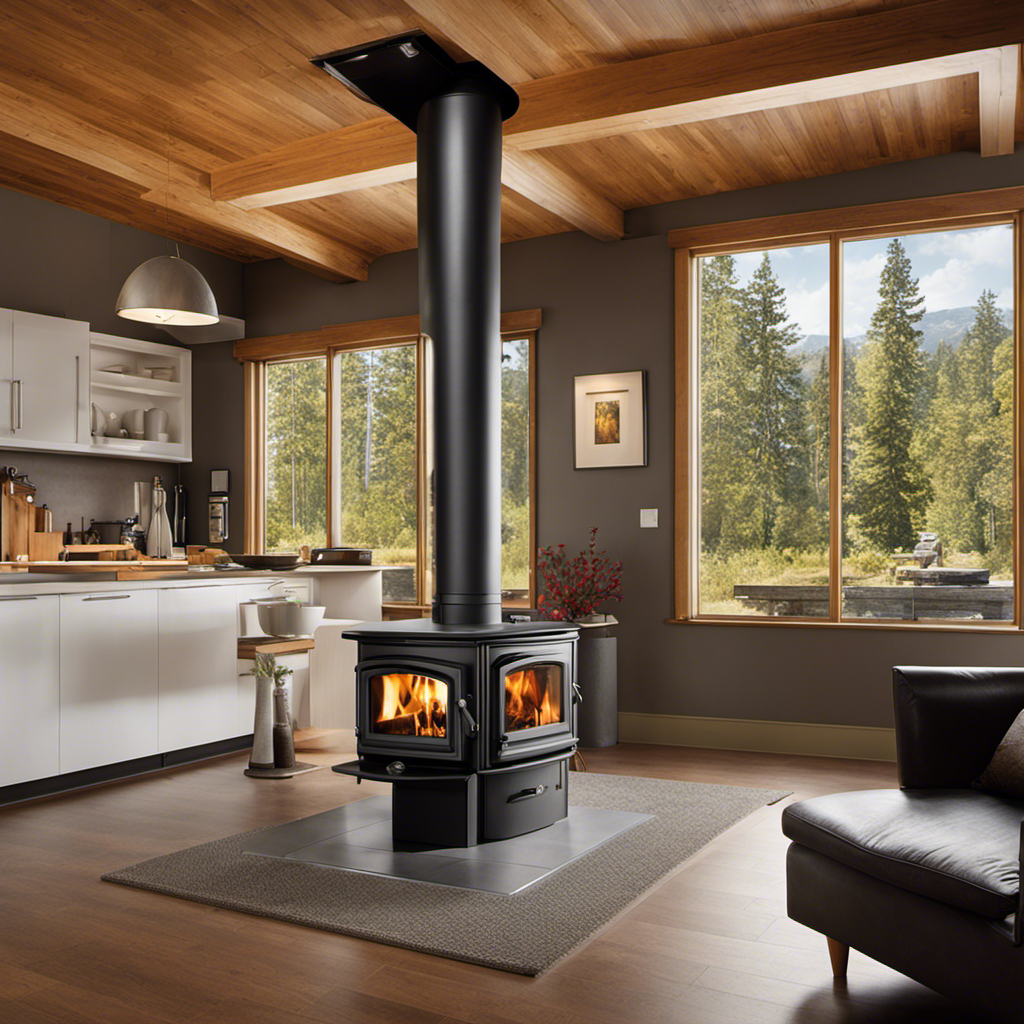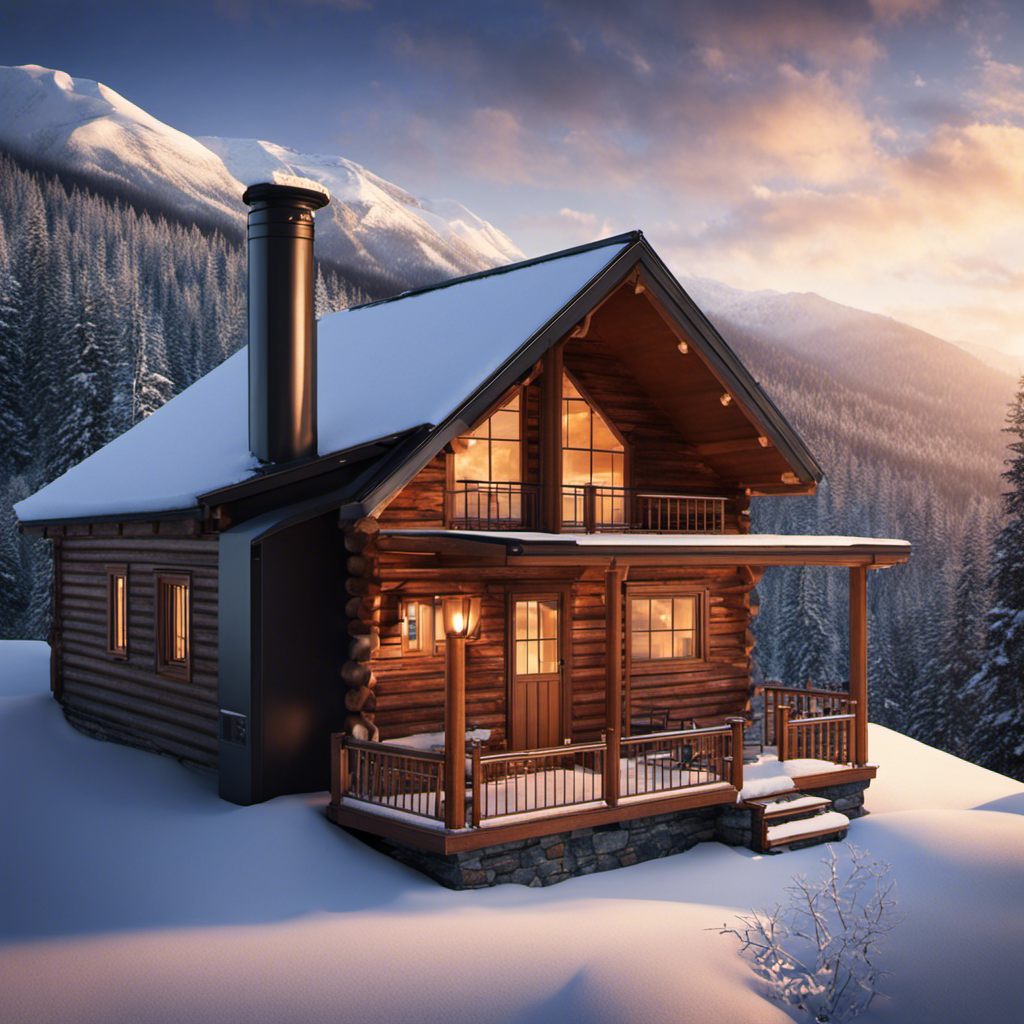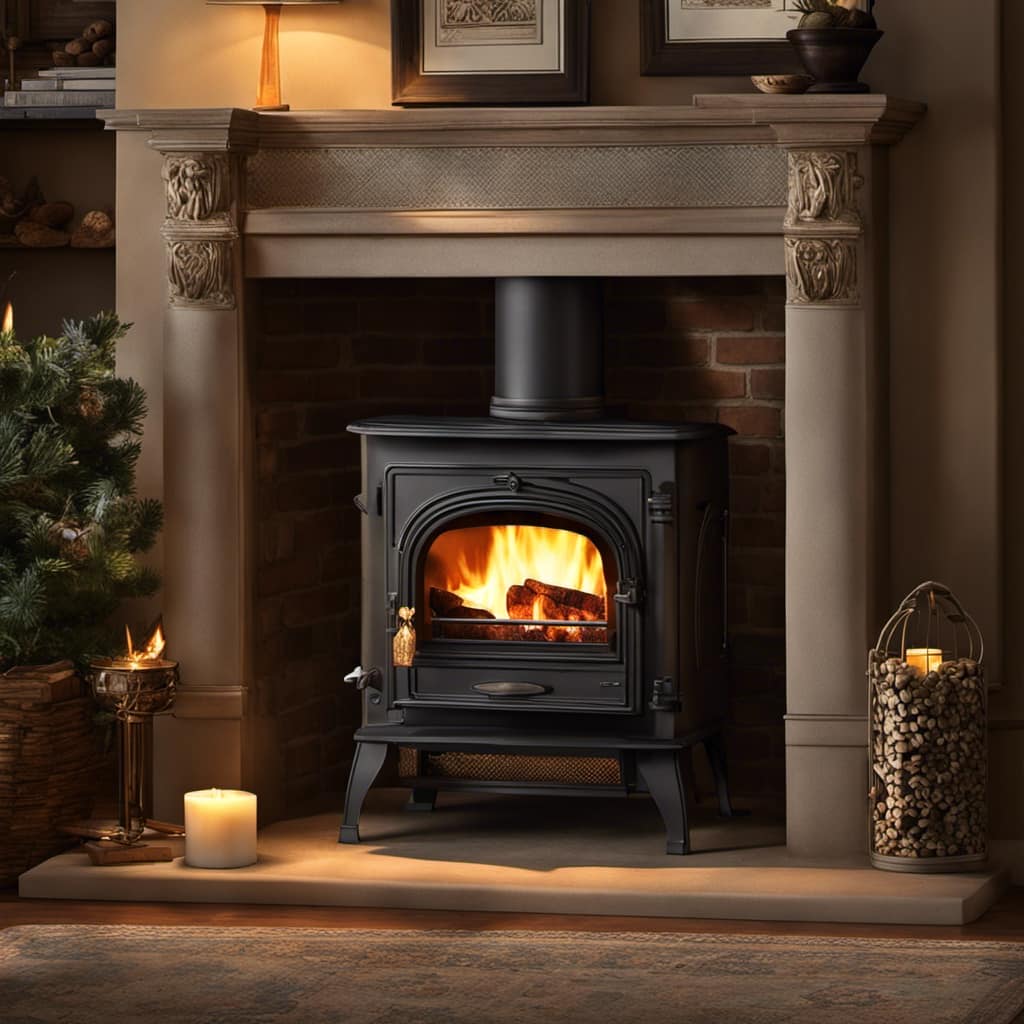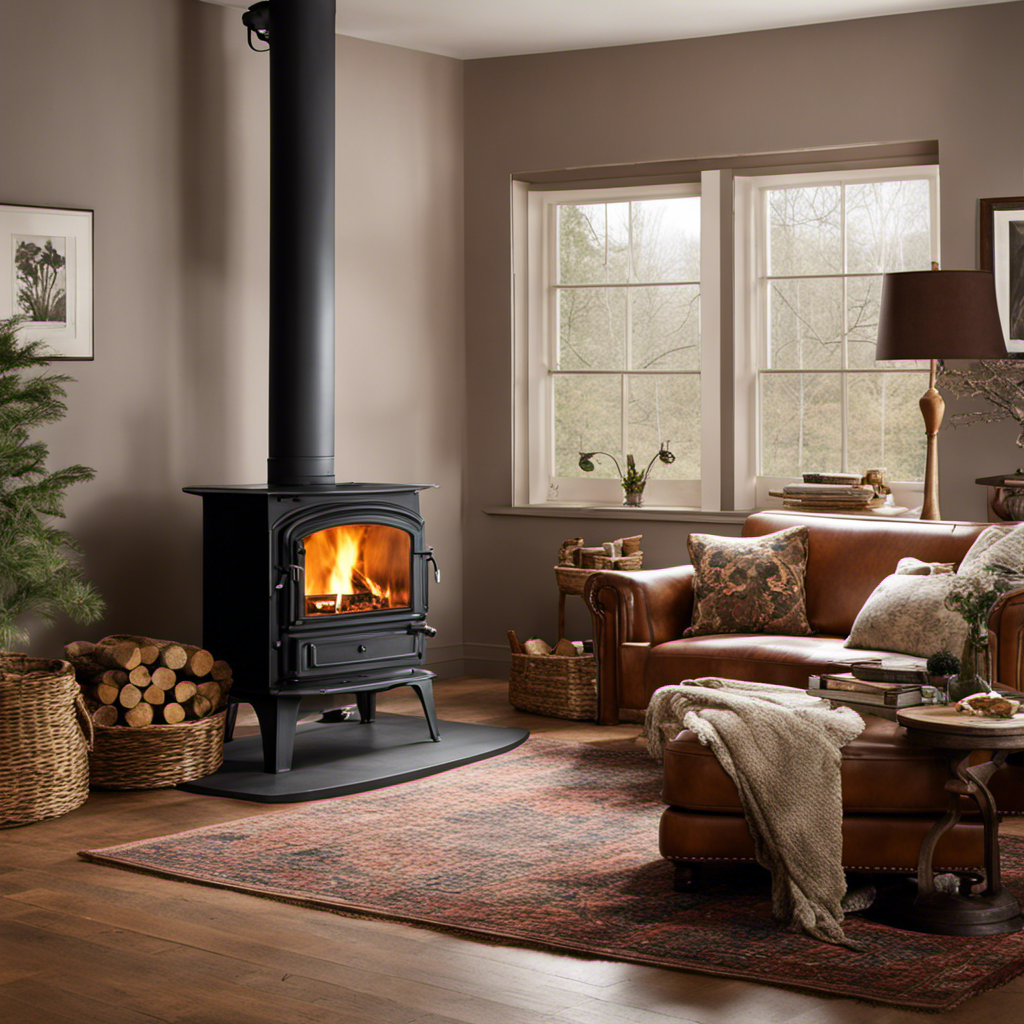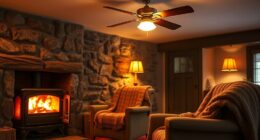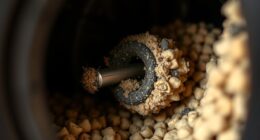As a property owner, maintaining fire safety has always been a major concern, particularly in the context of using a wood stove.
One crucial aspect that often gets overlooked is the minimum clearance from the wood stove to the ceiling. It’s not just about aesthetics; it’s about ensuring our homes are protected from potential fires.
In this article, we’ll explore the factors affecting these clearance requirements, provide specific guidelines for measurements, and emphasize the importance of regular maintenance and inspection to maintain a safe environment.
Key Takeaways
- Minimum clearance requirements ensure the safe distance between a wood stove and combustible materials.
- Factors like stove size, type, and presence of heat shields affect the required clearance distance.
- Local building codes provide specific regulations for wood stove clearance.
- Manufacturer recommendations provide guidelines based on stove design and heat output.
Understanding Minimum Clearance Requirements
I understand the minimum clearance requirements for safety when it comes to wood stove installation. It’s crucial to ensure that the stove is installed at a safe distance from combustible materials, such as the ceiling or walls.
Heat resistant materials play a significant role in minimizing the risk of fire hazards. These materials can withstand high temperatures and provide a barrier between the stove and surrounding surfaces. When installing a wood stove, it’s essential to use heat resistant materials for the walls and ceiling to prevent any potential fire accidents.
However, it isn’t just the materials that determine the minimum clearance. There are other factors that affect the required distance, such as the stove’s size, type, and the presence of any protective shielding or heat shields. Considering these factors is crucial to ensure the safety and efficiency of the wood stove.
Factors Affecting Minimum Clearance
There are several factors that can affect the minimum clearance required for safe wood stove installation. When determining appropriate clearance distance, it’s important to consider the following:
-
Stove size: The size of the wood stove can have a significant impact on clearance requirements. Larger stoves generally require more clearance due to their increased heat output and potential for sparks or embers.
-
Combustible materials: The proximity of combustible materials, such as walls, furniture, or curtains, to the wood stove is another crucial factor. These materials can easily catch fire if they’re too close to the stove, so maintaining sufficient clearance is essential.
-
Local building codes: Different jurisdictions may have specific regulations regarding wood stove clearance. It’s important to consult local building codes to ensure compliance and safety.
-
Manufacturer recommendations: Wood stove manufacturers often provide specific guidelines for clearance measurements. These recommendations take into account factors such as stove design, heat output, and ventilation requirements.
Considering these factors will help determine the appropriate minimum clearance for safe wood stove installation. Now, let’s dive into the specific guidelines for clearance measurements.
Specific Guidelines for Clearance Measurements
To ensure proper installation, it’s crucial to follow the specific guidelines and maintain the appropriate clearance measurements for a wood stove. Clearance measurements refer to the minimum distance required between the wood stove and any combustible materials, such as walls, ceilings, and furniture. These measurements are essential for safety precautions and to prevent the risk of fire.
The exact clearance requirements may vary depending on the specific model and manufacturer, so it’s important to consult the stove’s manual or contact a professional for accurate information. Installing a wood stove without adhering to the clearance measurements can result in overheating, damage to surrounding materials, and even potential fire hazards. Therefore, it’s imperative to take these measurements seriously and ensure that the wood stove is properly placed with adequate clearance to ensure fire safety.
Transition: Now that we understand the importance of maintaining clearance measurements, let’s delve into the specific measures to ensure fire safety with adequate clearance.
Ensuring Fire Safety With Adequate Clearance
In order to prevent potential fire hazards, it’s essential to adhere to specific clearance measurements and ensure that there’s adequate space between the wood stove and any combustible materials.
Fire prevention measures are crucial to maintaining a safe environment, especially when it comes to heating appliances like wood stoves. Here are some key points to consider:
-
Clearance requirements: It’s important to follow the manufacturer’s guidelines for clearance measurements, which specify the minimum distance that should be maintained between the wood stove and the surrounding walls, ceilings, and floors.
-
Combustible materials: Keep all combustible materials, such as furniture, curtains, and rugs, at a safe distance from the wood stove. This will minimize the risk of accidental fires.
-
Heat resistant materials: Ensure that all materials used in the vicinity of the wood stove are heat resistant. This includes the flooring, wall coverings, and any nearby furniture or accessories.
-
Regular inspections: Regularly inspect the area around the wood stove for any signs of damage or wear. This will help identify potential fire hazards and allow for timely repairs or replacements.
Importance of Regular Maintenance and Inspection
I strongly believe that regular maintenance and inspection are crucial for ensuring the longevity and safe operation of wood stoves.
Wood stoves are a popular choice for heating homes, but they require proper care to function efficiently and safely. Regular maintenance, such as cleaning the flue and chimney, ensures that the stove operates at its best and reduces the risk of chimney fires.
Inspections are equally important as they allow professionals to identify any potential issues or damages that may compromise the stove’s performance or safety. These inspections should be conducted annually to ensure that the stove is in good working condition.
Frequently Asked Questions
Can I Install a Wood Stove Directly Against a Wall or Does It Require a Certain Amount of Clearance?
I wouldn’t recommend installing a wood stove directly against a wall. It’s important for wood stove safety and proper installation to have a certain amount of clearance to prevent heat damage and fire hazards.
Can I Use Non-Combustible Materials to Reduce the Required Clearance Between My Wood Stove and the Ceiling?
Yes, you can use non-combustible materials to reduce the required clearance between my wood stove and the ceiling. By using these materials, you can safely decrease the distance needed for proper ventilation and heat dispersion.
Is There a Minimum Clearance Requirement for the Floor Around a Wood Stove?
Yes, there is a minimum clearance requirement for the floor around a wood stove. This is important to prevent any potential fire hazards. For example, a typical requirement may be a minimum clearance of 18 inches from the stove to the floor.
Are There Any Exceptions to the Minimum Clearance Requirements for Certain Types of Wood Stoves?
Exceptions to minimum clearance requirements for certain types of wood stoves depend on the specific model and manufacturer’s guidelines. Properly calculating and maintaining the required clearance between a wood stove and the ceiling is crucial for safety and fire prevention.
Are There Any Restrictions on the Type or Placement of Furniture Near a Wood Stove in Terms of Clearance?
Furniture placement restrictions near a wood stove are important due to safety concerns. It is crucial to maintain adequate clearance between the stove and any furniture to prevent the risk of fire or heat damage.
Conclusion
In conclusion, understanding and adhering to the minimum clearance requirements for wood stoves is crucial for ensuring fire safety in your home.
By taking into consideration factors such as the type of stove, insulation materials, and local building codes, you can determine the specific guidelines for clearance measurements.
Regular maintenance and inspection of your wood stove will also contribute to its safe operation.
Remember, ‘better safe than sorry’ – it’s always better to have more clearance than not enough when it comes to fire safety.

